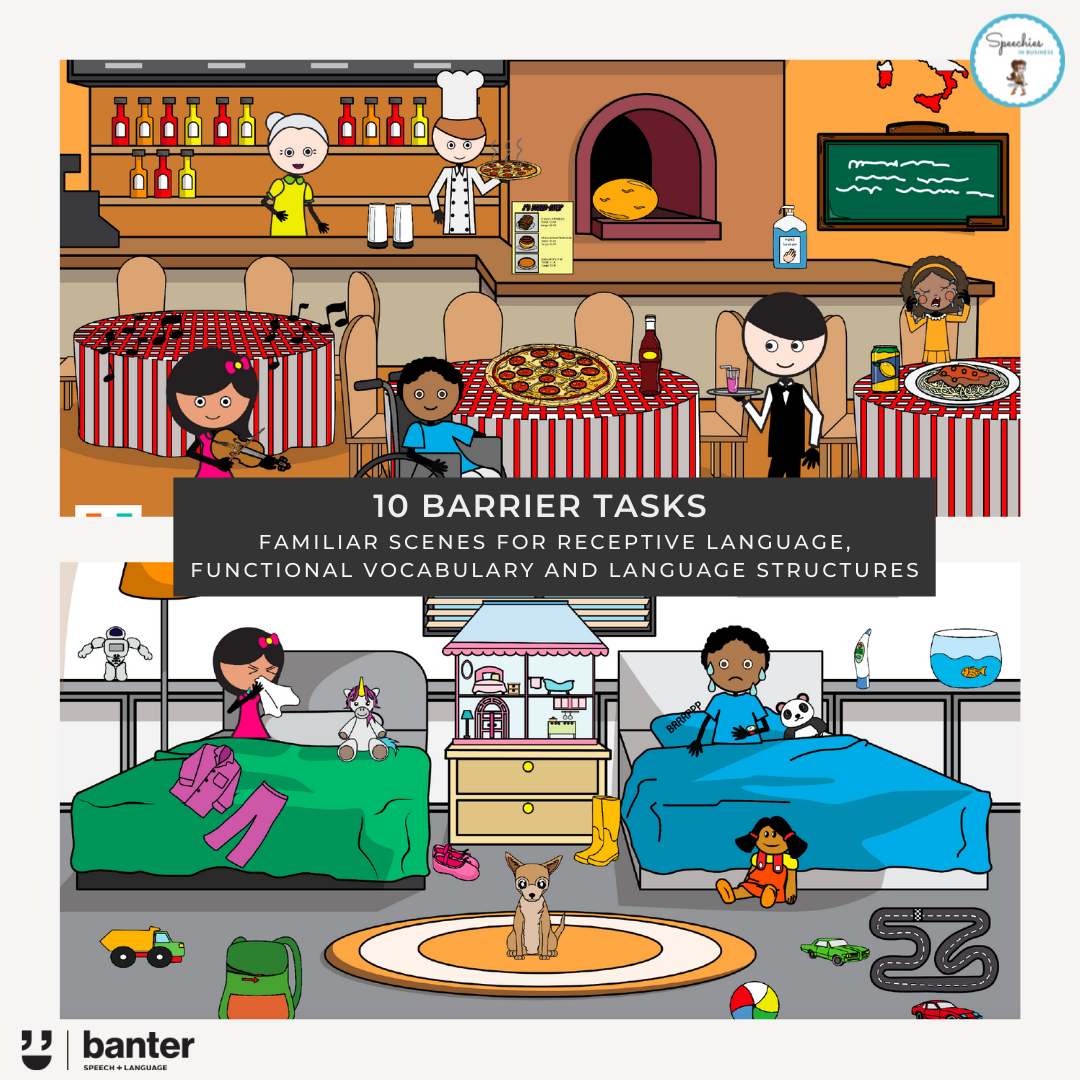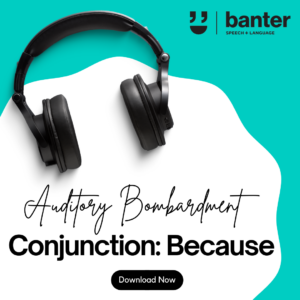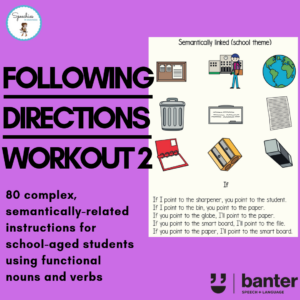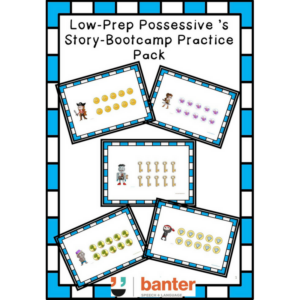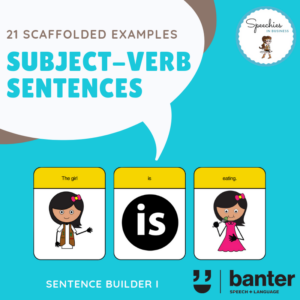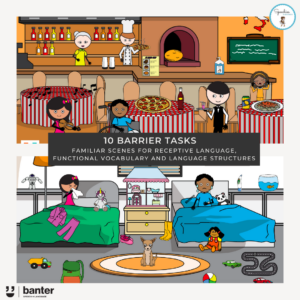(L301) Barrier Tasks for Receptive Language, Vocabulary and Language Structures
$6.99 including GST
Barrier tasks are flexible activities that help students – including students with communication disorders and students learning English as an additional language – to demonstrate functional skills requiring clear communication.
In this 28-page pack, the barrier stimulus worksheets are designed to help participants to develop their vocabulary and language structures using 10 familiar scenes.
The pack includes instructions, and tokens to use with the worksheets.
Description
Banter Barrier Tasks: Familiar scenes to work on receptive and expressive functional vocabulary (e.g., nouns and verbs) and language structures (e.g., language for instructions and questions) together.
Barrier tasks are flexible activities that help students – including students with communication disorders and students learning English as an additional language – to demonstrate functional skills requiring clear communication.
Barrier tasks can be used for a variety of purposes including helping people learn to speak more clearly, to understand and use language content (e.g. vocabulary, attributes, and categories), understand and use language structures (e.g. morphemes like plurals or possessives, different sentence structures, and following multistep and other complex instructions), and improve their social use of language (e.g. through scaffolded conversations, sequences, and stories).
A barrier activity uses a screen or “barrier” between the speaker and the listener. The barrier can be as simple as a book or folder; or as elaborate as a wall or magnet board. Whatever you use, make sure your barrier prevents the speaker and listener from seeing each other’s work.
Barrier tasks create a need for the speaker to impart clear, relevant messages; and for the listener to listen carefully and to ask for clarification when needed. Barriers can also constrain listeners and speakers by preventing them from using writing, gesture and/or drawing to clarify messages. Constraints like these force speakers and listeners to use – and to practice – their oral language and listening skills; and to develop their theory of mind by learning to put themselves in someone else’s shoes.
In this 28-page pack, the barrier stimulus worksheets are designed to help participants to develop their vocabulary and language structures using 10 familiar scenes. The pack includes instructions, and tokens to use with the worksheets.
Principal sources:
- Ratcliff, A., & Little, M. (1996). A conversation based barrier task approach to teach sight-word vocabulary to a young augmentative communication system user. Child Language Teaching and Therapy, 138.
- Goral, M. & Kempler, M. (2009). Training verb production in communicative context: Evidence from a person with chronic non-fluent aphasia. Aphasiology, 23(12), 1383.
For other barrier tasks, see our:

